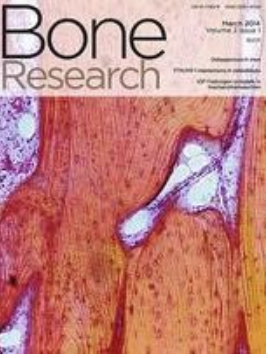Research progress on sarcopenia in the musculoskeletal system.
IF 15
1区 医学
Q1 CELL & TISSUE ENGINEERING
引用次数: 0
Abstract
Sarcopenia, a progressive and systemic skeletal muscle disorder marked by the accelerated deterioration of both muscle function and mass, is highly prevalent among the elderly population, significantly contributing to an elevated risk of adverse outcomes, including falls, fractures, and muscle weakness. Clinical investigations have identified a strong correlation between sarcopenia and several prevalent degenerative skeletal muscle disorders. This correlation is attributed to imbalances in joint mechanics resulting from localized muscle atrophy and the influence of musculoskeletal secretory factors. In this review, we discuss the broader implications of sarcopenia and critically evaluate the currently established assessment methods. Furthermore, the clinical significance of prevalent musculoskeletal disorders (including osteoporosis, osteoarthritis, and spinal pathologies) in relation to sarcopenia, alongside the underlying mechanisms influencing this relationship, is summarized. Additionally, the effects of sarcopenia on the therapeutic efficacy of medications and surgical interventions for musculoskeletal conditions are reviewed. Sarcopenia is intricately linked to the onset, progression, and prognosis of musculoskeletal disorders. Future research should prioritize elucidating the potential mechanisms that connect muscle loss with skeletal muscle diseases, and investigating whether mitigating sarcopenia symptoms could decelerate the progression of these disorders, thereby paving new pathways for therapeutic interventions.肌肉骨骼系统中肌肉减少症的研究进展。
骨骼肌减少症是一种进行性和全身性骨骼肌疾病,其特征是肌肉功能和质量的加速退化,在老年人中非常普遍,显著地增加了不良后果的风险,包括跌倒、骨折和肌肉无力。临床研究已经确定了肌肉减少症与几种流行的退行性骨骼肌疾病之间的密切联系。这种相关性归因于局部肌肉萎缩引起的关节力学失衡和肌肉骨骼分泌因子的影响。在这篇综述中,我们讨论了肌肉减少症的广泛含义,并批判性地评估了目前建立的评估方法。此外,本文还总结了与肌肉减少症相关的常见肌肉骨骼疾病(包括骨质疏松症、骨关节炎和脊柱疾病)的临床意义,以及影响这种关系的潜在机制。此外,对肌肉减少症对药物治疗效果和手术治疗肌肉骨骼疾病的影响进行了综述。骨骼肌减少症与肌肉骨骼疾病的发病、进展和预后有着复杂的联系。未来的研究应优先阐明肌肉损失与骨骼肌疾病之间的潜在机制,并研究减轻肌肉减少症症状是否可以减缓这些疾病的进展,从而为治疗干预开辟新的途径。
本文章由计算机程序翻译,如有差异,请以英文原文为准。
求助全文
约1分钟内获得全文
求助全文
来源期刊

Bone Research
CELL & TISSUE ENGINEERING-
CiteScore
20.00
自引率
4.70%
发文量
289
审稿时长
20 weeks
期刊介绍:
Established in 2013, Bone Research is a newly-founded English-language periodical that centers on the basic and clinical facets of bone biology, pathophysiology, and regeneration. It is dedicated to championing key findings emerging from both basic investigations and clinical research concerning bone-related topics. The journal's objective is to globally disseminate research in bone-related physiology, pathology, diseases, and treatment, contributing to the advancement of knowledge in this field.
 求助内容:
求助内容: 应助结果提醒方式:
应助结果提醒方式:


